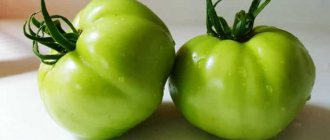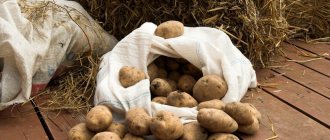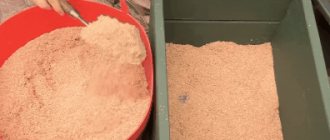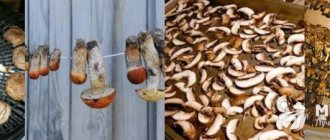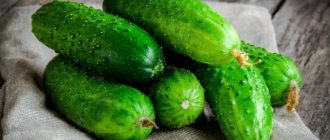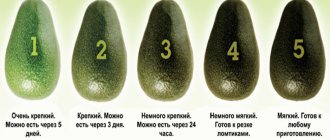How to choose
- The persimmon is carefully examined. Particular attention is paid to its skin and stalk. A thin, glossy peel and a completely dried stalk are indicators that the fruit is ripe while still on the branch. And the presence of thin brown lines indicates its full maturity.
- Black spots and cracks should not be present on the surface. In this case, the storage of persimmons will not last long.
- The degree of ripeness can also be determined by the pulp: when pressed, the pulp should not be hard.
- It is better to buy a product with a round shape. If the fruits are cone-shaped, flattened or cylindrical, their taste may be bitter and too astringent.
- Unripe persimmons are light orange in color, while fully ripe persimmons range in color from bright orange to brown. This will depend on the variety.
- Soft fruits that are already overripe will not be stored - this must be taken into account at the time of purchase.
Basics of making the right choice
Persimmon is a large fruit, shaped like an apple. It has a bright orange peel, which contains fleshy and juicy pulp. It tastes pleasant, moderately sweet, not cloying. Unripe fruits have reduced taste. Persimmons that have not reached biological maturity are knitting. Purchasing an unripe fruit is beneficial only when the persimmon is planned to be stored for a long time at room temperature. If the stalk is preserved, the fruit will reach maturity and not spoil within 2-4 weeks.
You can choose a quality fruit if you know the following rules:
- The fruits are carefully examined, paying attention to the peel and stalk. The skin should be smooth and shiny; if it is matte and dense, the fruit is unripe and may not have reached this state because it was picked from the tree branches too early. A dried stalk indicates ripeness.
- If there are dark spots and cracks on the surface of the persimmon peel, you should refuse to buy it. Firstly, it will not last for a long time, and secondly, the product can act as a source of bacteria. Because when the peel is damaged, bacteria quickly spread to the pulp.
- Ripeness is assessed by softness. Ripe fruits should be soft and elastic, not jelly-like.
- Persimmon varieties "Sharon", "Korolek" and "Kaki" are always sweet. It is very easy to identify such fruits; they have a round shape. It should be taken into account that when pressed they are quite dense.
- Ripe fruits have a rich orange color, and unripe ones are light, but this is not a key indicator, because the color often depends on the variety.
The described recommendations should be applied if you plan to eat persimmons right away. If you need to ensure its storage in the future, you need to proceed in the opposite way, choosing not the most ripe options.
Attention! Varieties like “Korolek” retain their structure well after defrosting. For long-term storage, it is worth choosing fruits that have a dense peel.
Video: how to choose healthy and not tart persimmons
How to choose a healthy and not tart persimmon - Everything will be fine - Issue 525 - 01/05/15 - Everything will be fine
Watch this video on YouTube
Storage conditions
You can store persimmons not only in the refrigerator. It is allowed to keep this delicacy at room temperature for some time. Fully ripened fruits are stored at 0°C -+1°C and humidity 90%. It is advisable to keep them in the freshness zone of the refrigerator. It is best to place the fruit stem down. There should be a small distance between the fruits, and it is also fashionable to wrap each of them in paper. This is necessary to prevent rotting of neighboring trees if there is one rotten one. There is no need to wash persimmons before storing them.
Cellar storage
- Persimmons should be stored in the cellar in wooden containers. It is placed in boxes, in a maximum of two layers. In this case, the bottom row is laid so that the stalk is at the bottom, and the top row, on the contrary, with the stalk up.
- To prevent the fruits from touching each other, they are separated by sprinkling with sawdust (soft shavings will also do).
- The condition of the crop must be constantly monitored. Once a week, inspect them and remove those that have begun to deteriorate.
- The shavings also need to be replaced with fresh ones. It is best to do this once a month.
- Those fruits that are already fully ripe (as a result have acquired a bright color and become soft) are moved to the cold.
Storage without refrigeration
In a warm place, without a refrigerator, storing persimmons is possible for only a few days. It is placed in the most shaded areas of the apartment with good air movement and inspected regularly. You cannot miss the time when the harvest begins to deteriorate.
When the persimmon reaches ripeness, it is placed in the fruit compartment of the refrigerator (freshness zone). After which they use it at their own discretion.
General storage table
| Storage method | Shelf life |
| In a refrigerator | up to 3 months |
| At room temperature | no more than a month |
| In the freezer | up to a year |
| Dried | up to two years |
Results
If you plan to consume persimmon immediately after purchase, you should choose a ripened fruit. If the fruit needs to be preserved for some time, it is better to buy it unripe; it will retain its taste perfectly in the refrigerator or at room temperature.
For long-term storage, it is recommended to freeze persimmons. You can do this in two ways: whole and in pieces. There are also popular options that involve creating tasty preparations based on the fleshy fruit. Freezing not only allows you to preserve persimmons for a long time, but also increases its taste characteristics. The viscous fruit that has undergone cooling becomes sweet and very tasty.
Do you want to understand better than others?
- Shelf life of boiled squid in the refrigerator - Squid is a popular seafood product that acts as a source of protein. Necessary for the normal functioning of the human body. All protein foods, in particular all seafood...
- Choosing ways to store cutlets in the refrigerator - Cutlets are a common and beloved meat dish, which, if storage standards are not followed, quickly deteriorates and becomes unfit for consumption. To…
- Methods for storing lard in various forms in the refrigerator - Lard is animal fat in a solid state. The product is eaten in different ways of preparation: salted, smoked, boiled or fried. Depending on the…
- The most popular ways to freeze chanterelles for the winter - Chanterelles have more pronounced taste characteristics when compared with champignons and oyster mushrooms. However, their significant drawback is the limited period...
- Features and shelf life of fresh and prepared mushrooms in the refrigerator - After harvesting mushrooms, you do not always have the strength to immediately process it. Therefore, there is a need to place the product in storage. Shelf life depends on the type and method...
Cold storage
- You can store unripe persimmons that were purchased in an unripe state for as long as possible. In this form, it can be stored in the fruit container of the refrigerator (temperature 0 ° C - + 1 ° C, humidity - 90%) for up to 3 months.
- Overripe, softened fruits, or those that have been frozen, can be stored for no more than 7 days.
- Ripe persimmons cut into pieces are kept in the refrigerator for no more than 3 days.
- Fruits need access to air, so it is better to keep them open or in paper bags. If you put them in a plastic bag, very soon they will begin to rot.
Period, temperature and storage conditions at home
Storing exotic berries at home is possible not only in the refrigerator. At room temperature, unripe fruit will be stored for several days . In a dark, cool place, the period will increase to several weeks (but not more than a month).
No matter which location you choose, remember:
- Persimmons that are too soft will spoil in 1-2 days.
- Hard varieties (Shokoladnitsa, Sharon) are stored longer than soft ones (Vostochnaya, Khiakume).
- Do not cut off the stems - this will shorten the shelf life.
- The fleshy berry will quickly rot if there is a lack of air or its complete absence. It is recommended to store fruits in paper bags or open containers.
- If you place persimmons next to apples, they will ripen faster.
- Ensure constant ventilation in the storage area.
- Do not store exotic berries next to other vegetables and fruits. This speeds up rotting.
- For long-term storage it requires high humidity - 80%. If the indicator is lower, the fruit will wrinkle and dry out; if it is higher, it will rot.
Proper storage in the refrigerator
Unripe persimmons have the longest shelf life in the refrigerator.:
- The fruit is stored in a fruit container in the refrigerator for up to 3 months at a temperature of 0 to +1°C and a humidity of 90%.
- Soft, overripe fruit can be stored for no longer than a week.
- Ripe berries cut into pieces will last in the refrigerator for no more than three days.
- It is important to provide the product with access to air. Store it open or in paper bags.
Ripe persimmons in polyethylene will spoil in a few hours.
Freezing
Fruits are frozen whole and cut into pieces . Before putting the berries in the freezer, they are prepared: washed, slightly dried, placed in containers and placed in the freezer. In this form, the product retains its taste and beneficial properties for more than 6 months (up to 10-12 months). Persimmon storage temperature is +18…19°C.
Interesting! Frozen persimmons lose their viscosity and astringency, their taste becomes sweeter and juicier, especially if the fruit is frozen in sugar syrup.
After defrosting, the structure of the pulp changes slightly . It becomes looser, but this does not spoil the taste.
How long to store and how to defrost persimmons
Before use, frozen berries are slowly defrosted in a container with cold or slightly warm water at room temperature.
Important! There is no need to freeze such fruits a second time. They lose all their beneficial properties and taste.
The shelf life of thawed persimmons is extremely short . It is better to pack it for freezing in small portions (pieces, for example) and remove it from the freezer as needed - before direct consumption.
Frozen storage
Fruits can be frozen either whole or cut into pieces. Before storing persimmons in the freezer, they are washed, slightly dried from excess moisture, placed in containers and sent to the freezer, where they will retain their quality for 1 year.
When frozen, the taste of persimmon ceases to be tart and viscous and becomes sweet. Especially if the freezing took place in sugar syrup.
The structure of the pulp after defrosting may change to a looser one, but the taste and amount of nutrients will remain virtually unchanged.
It needs to be defrosted gradually, in a container with cold water, and not frozen again. Otherwise, the persimmon will lose its taste and beneficial qualities.
Storing dried persimmons
After drying, the product retains most of the vitamins and microelements. Drying proceeds according to the following scheme:
- The fruits are washed, peeled and cut into small pieces. You can leave them whole, but it will be more difficult to dry.
- Dry naturally or in the oven at a temperature of +60°C -+65°C. The oven door is kept slightly open during drying.
- Fruits with a firm consistency are suitable for drying: such as the Korolek variety.
Dried persimmons are stored well in cotton bags. Fresh air must constantly penetrate dried fruits. That is why it is unacceptable to store persimmons in hermetically sealed plastic bags.
It is advisable to store dried persimmons in dark, cool and dry places. A pantry or closed kitchen cabinet located away from heating appliances works well.
To prevent supplies from being attacked by pests, the bag is first soaked in a concentrated salt solution and then dried well. But it is still advisable to inspect the workpieces frequently to be sure that everything is in order.
Storing dried and dried persimmons at home
After drying, the fruits retain most of the nutrients . For drying, it is recommended to choose hard varieties (for example, Korolek).
How to preserve persimmons longer by drying:
- Wash, peel and cut into small pieces.
- Dry the fruits naturally or in the oven at a temperature of +60...65°C for 7-8 hours. It is recommended to keep the oven door slightly open.
Store dried persimmons in cotton bags . Fruits need access to fresh air. Leave the bags in a dark, dry and cool place, such as a pantry or kitchen cabinet, away from heating appliances.
Important! Storage bags are soaked in a concentrated salt solution to protect the product from pests.
The shelf life in dried form is several years.
Dried persimmon retains its taste and beneficial properties for 1-2 years . How to prepare it:
- Take a firm, slightly unripe fruit.
- Do not touch the stem, but carefully cut off the leaves with a sharp knife.
- Remove the skin from the juicy berry (remove a thin layer).
- Place in a dry and clean container.
- Tie the stem with cotton thread.
- Place the persimmons in boiling water, after adding a small amount of sugar.
- Hold for a few seconds and remove.
- Hang the fruit bundles on a rope.
Persimmons should be dried in a ventilated and cool room (for example, on a balcony) for 4-5 weeks. After this, it is stored in a closed container.

